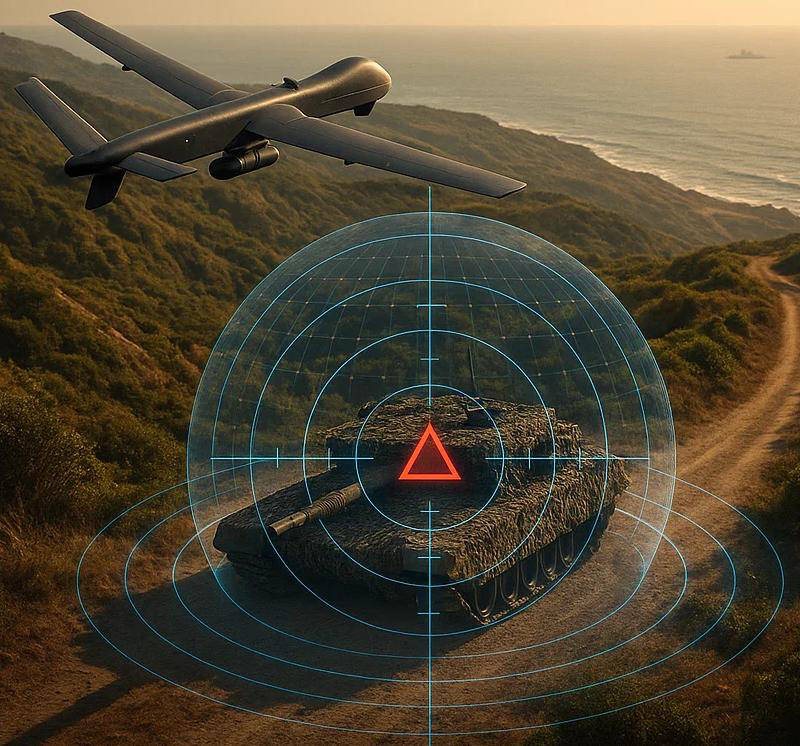
VORTEX provides a loitering ISR/strike autonomy layer that detects and vectors toward adversary RF emitters in contested spectrum environments. The layer uses passive RF detection + geolocation fused with onboard navigation to guide attritable Group 2 UAS and loitering munitions toward jammers and emitters.
Small unmanned aerial systems (sUAS) are increasingly vital to Department of the Air Force (DAF) operations across ISR, comms relay, and kinetic mission sets. However, their growing dependence on GPS and high-bandwidth command links creates an exploitable weakness.
In contested environments, adversaries can easily disrupt sUAS effectiveness by jamming GNSS signals or saturating RF control channels, leading to navigation loss, mission abort, or even airframe loss. This vulnerability directly undermines operational survivability, ISR continuity, and tactical autonomy in future conflict environments.
The core problem addressed by VORTEX is the absence of a resilient fallback autonomy layer that enables UAS to persist and reorient missions in the presence of GPS denial or command uplink failure caused by adversarial electronic warfare (EW).
Without access to GNSS or operator intervention, today’s drones typically revert to predefined return-to-launch (RTL) or hover/land behaviors, which are ineffective and potentially hazardous in adversarial terrain. These behaviors also cede operational initiative and increase vulnerability to capture, spoofing, or neutralization.
VORTEX is compatible with JTAC workflows, Army LMPO loitering munition programs, SOCOM PEO-SW, and DAF EW units.
For more information, technical briefings, or contracting opportunities, please contact Post Quantum Labs at [email protected].